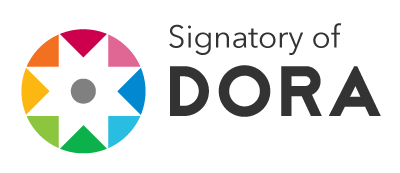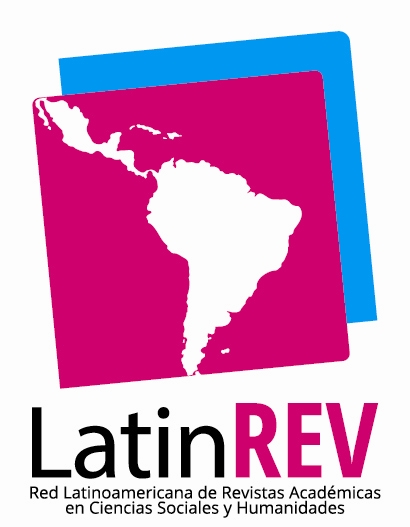Comunidades hispanohablantes en Twitch: Análisis de interacciones y performance en streamers españoles y ecuatorianos
Resumen
En el actual sistema mediático, Twitch se ha establecido como una plataforma en la que los creadores de contenido han encontrado un espacio para relacionarse y transmitir sus ideas. El artículo es un análisis exploratorio de las interacciones al interior de las comunidades de streamers ecuatorianos y españoles en la plataforma Twitch. Con el objetivo de determinar los elementos performáticos en las interacciones de las comunidades hispanohablantes, se ha aplicado el método cualitativo a través de una observación participativa a 56 transmisiones de 14 streamers hispanohablantes. Los resultados muestran que el principal lenguaje que utilizan los creadores de contenidos es informal y coloquial; además que los elementos performáticos como la escenografía, el vestuario, el diseño de pantalla y las herramientas que ofrece Twitch tienen una buena recepción en los espectadores, influyen en la participación de los miembros de las comunidades y dejan en evidencia las diferencias en la performance de los creadores de contenido ecuatorianos versus españoles.Citas
Álvarez, N. (2024). El boom de Twitch: el auge de la plataforma por el impacto de la pandemia de Covid-19. Visión de Futuro, 28(2), 37-58. https://doi.org/10.36995/j.visiondefuturo.2024.28.02.002.es
Africano, L., Álvarez Nobell, A., Becerra, M., Dessein, D., Codeseira, S., Geoghedan, B., Mociulsky, M, Olivera, S., Pallotti, C., Roitberg, G., Rottman, D. & Sibila, P. (2020). La vida digital de los medios y la comunicación: ensayos sobre las audiencias, el contenido y los negocios en Internet. Ediciones Granica.
Bowmann, S. & Willis, C. (2003). We Media: How Audiences are shaping the Future of News and Information. The Media Center at The American Press Institute, Reston. https://ict4peace.org/wp-content/uploads/2007/05/we_media.pdf
Brynjolfsson, E., Eggers, F., & Collis, A. (2018). Measuring Welfare with Massive Online Choice Experiments: A Brief Introduction. American Economic Association Papers and Proceedings, 473-476. http://hdl.handle.net/1721.1/120171
Cuesta, M. (2009). Introducción al muestreo. Universidad de Oviedo.
Cusumano, M., Gawer, A. & Yoffie, D. (2021). Can Self-Regulation Save Digital Platforms? Industrial and Corporate Change, 1-36. https://doi.org/10.2139/ssrn.3900137
Ehret, C. & Čiklovan, L. (2020). How speculative designs produce new potentials for education research in digital culture. Discourse: Studies in the Cultural Politics of Education, 41. https://doi.org/10.1080/01596306.2020.1774713
García-Casas, D. (2024). Más que jugadores. Temas, géneros, interacción y autolegitimación de los streamers de contenido sociopolítico en español más populares en Twitch. Dígitos. Revista de Comunicación Digital, 10, 240-262. https://doi.org/10.7203/drdcd.v0i10.277
Gawer, A. (2021). Online Platforms: Societal Implications of the New Dominant Business Models of the Digital Economy. Hertie School. https://digitalage.berlin/wpcontent/uploads/2021/09/HS_Brief-1_Gawer_final.pdf
Giertz, J. N., Weiger, W. H., Törhönen, M. & Hamari, J. (2022). Content versus community focus in live streaming services: how to drive engagement in synchronous social media. Journal of Service Management, 33(1), 33-58. https://doi.org/10.1108/JOSM-12-2020-0439
Goffman, E. (1991). Los momentos y sus hombres. Paidós.
González Castilla, F. (2019). La economía colaborativa ante el derecho de la competencia. Una introducción al análisis antitrust y regulatorio de las plataformas. Aranzadi.
Hamilton, W. A., Garretson, O., & Kerne, A. (2014). Streaming on twitch: Fostering participatory communities of play within live mixed media. In Proceedings of the SIGCHI Conference on Human Factors in Computing Systems (CHI '14) (pp. 1315–1324). Association for Computing Machinery. https://doi.org/10.1145/2556288.2557048
Hardaker, C. (2010). Trolling in asynchronous computer-mediated communication: From user discussions to academic definitions. Politeness Res. 6(2), 215–242.
Hernández, R., Fernández, C. & Baptista, P. (2010). Metodología de la investigación. McGraw Hill España
Hilvert-Bruce, Z., Neill, J. T., Sjöblom, M. & Hamari, J. (2018). Social motivations of livestreaming viewer engagement on Twitch. Computers in Human Behavior, 84, 58-67. https://doi.org/10.1016/j.chb.2018.02.013.
IFEMA. (2023). ¿Qué es un streamer y en qué plataformas está? https://acortar.link/nZrXRNJacobs, N. & Booth, P. (2021). Converging experiences, converging audiences: An analysis of doctor who on Twitch. Convergence, 27(5), 1324-1342. https://doi.org/10.1177/135485652097644
Jaramillo-Dent, D., Vizcaíno-Verdú, A., De-Casas, P. & Baldallo, C. (2020). Instagramming. Temas, tópicos y tendencias. Octaedro.
Johnson, M. R. (2018). Inclusion and exclusion in the digital economy: disability and mental health as a live streamer on Twitch.tv. Information Communication & Society, 22(4), 506-520. https://doi.org/10.1080/1369118x.2018.1476575
Johnson, M. R. & Woodcock, J. (2017). ‘It’s like the gold rush’: the lives and careers of professional video game streamers on Twitch. tv. Information, Communication & Society, 22(3), 336–351.
Ku, Y., Chen, R. & Zhang, H. (2013). Why do users continue using social networking sites? An exploratory study of members in the United States and Taiwan. Information & Management, 50(7), 571-581. https://doi.org/10.1016/j.im.2013.07.011
Kücklich, J. (2005). Precarious Playbour: Modders and the Digital Games Industry. The Fibreculture Journal, 5.
Marketing News. (2021, abril 27). Plataformas de streaming, grandes beneficiadas por los nuevos hábitos creados durante la pandemia. Marketing News. https://acortar.link/SHmycW
McMillan, D. W. & Chavis, D. (1986). Sense of community: a definition and theory. Journal of Community Psychology, 14, 6-23.
Monje, C. (2011). Metodología de la investigación cuantitativa y cualitativa. Guía didáctica. Universidad Surcolombiana/ Facultad de Ciencias Sociales y Humanas.
Närvänen, E., Kartastenpää, E. & Kuusela, H. (2013). Online lifestyle consumption community dynamics: A practice‐based analysis. Journal Of Consumer Behaviour, 12(5), 358-369. https://doi.org/10.1002/cb.1433
Peper, E., Wilson, V., Martin, M., Rosegard, E. & Harvey, R. (2021). Avoid Zoom fatigue, be present and learn. NeuroRegulation, 8(1), 47–56. https://doi.org/10.15540/nr.8.1.47
Pérez, B. & Gil, J. (2014). ¿Mercantilización o Revolución? Reflexiones en torno a la figura del streamer como nuevo sujeto prosumidor. 15Mp2p: Encuentro transdisciplinar, 294-301.
Pink, S., Horst, H., Postill, J., Hjorth, L., Lewis, T. & Tacchi, J. (2016). Digital Ethnography: Principles and Practices. SAGE.
Pombo, V. (2021, 12 noviembre). ‘Streamers’, nuevos ídolos de masas con influencia más allá de los eSports. BBVA NOTICIAS. https://acortar.link/o8Ejxv
Postigo, H. (2007). Of mods and modders chasing down the value of fan-based digital game modification. Games and Culture, 2(4), 300–313. https://doi.org/10.1177/15554120073079
Robles Martín-Laborda, A. (2017). Merger Control and Online Platforms: The Relevance of Network Effects. Market and Competition Law Review, 2. https://ssrn.com/abstract=3024225
Romero Chaves, C. (2005). La categorización es un aspecto crucial en la investigación cualitativa. Cesmag. https://biblioteca.unicesmag.edu.co/digital/revinv/0123-1340v11n11pp113.pdf
Ruggiero, T. E. (2000). Uses and gratifications theory in the 21st century. Mass Communication & Society, 3, 3e37. https://doi.org/10.1207/S15327825MCS0301_02.
Sánchez, J. (2019, 26 mayo). Qué son los streamers, la nueva tendencia en redes que conquista a los centennials y mueve millones. Infobae. https://acortar.link/vsEWsY
Sandoval Casilimas, C. A. (1996). Investigación cualitativa. Instituto Colombiano para el Fomento de la Educación Superior.
Scolari, C. (2015). Ecología de medios: Entornos, evoluciones e interpretaciones. Gedisa.
Shao, G. (2009). Understanding the appeal of user-generated media: A uses and gratification perspective. Internet Research, 19(1), 7e25. https://doi.org/10.1108/10662240910927795.
Sibilia, P. (2013). El artista como espectáculo: autenticidad y performance en la sociedad mediática. Dixit, 18, 4-19. https://doi.org/10.22235/d.v0i18.360
Sotamaa, O. (2010). When the game is not enough: motivations and practices among computer game modding culture. Games and Culture, 5(3), 239–255. https://doi.org/10.1177/15554120093597
Spilker, H. S. (2020). The new practices and infrastructures of participation: How the popularity of Twitch. tv challenges old and new ideas about television viewing. Information, Communication & Society, 23(4), 605-620.
Taylor, T. L. (2018). Watch Me Play: Twitch and the Rise of Game Live Streaming. Princeton University Press.
Terranova, T. (2004). Network Culture: Politics for the Information Age. Pluto Press.
Ure, M. (2018). Engagement estratégico y encuentro conversacional en los medios sociales. Revista de Comunicación, 17(1), 181-196. http://doi.org/dwmn
Descargas
Publicado
Cómo citar
Número
Sección
Licencia
CREATIVE COMMONS 4.0 Internacional
Los trabajos publicados en esta revista están bajo Licencia Creative Commons Atribución-NoComercial-CompartirIgual 4.0 Internacional.
Las obras publicadas bajo esta licencia pueden ser compartidas, copiadas y redistribuidas en cualquier medio o formato. Asimismo, se autoriza la adaptación, remezcla, transformación y creación. Tanto el compartir como el adaptar son posibles siempre y cuando se le otorgue el crédito a la obra de forma adecuada, proporcionando un enlace a la licencia e indicando si se han realizado cambios. Asimismo, no es posible realizar un uso comercial del material.









